Fast growing and well-suited to the Irish climate, willow is a crop which fits in well with Irish farms. However, the crop has had a somewhat troubled past.
The Government introduced a scheme to incentivise the planting of willow in 2007 but waited nearly a decade to develop a follow-up scheme to help incentivise its use.
As a result, many of the 3,000ac of willow crops planted with the help of the scheme have now disappeared due to a lack of market development.
All of those crops were grown as biomass to be burned in biomass boilers to create either heat or electricity.
But willow is a highly versatile crop with multiple different uses and many now believe that the crop was targeted at the wrong market.
Willow, specifically its bark, contains a host of high-value bioactives which could potentially be used in the pharmaceutical industry. This could drastically change the economics of the crop.
The BioWILL Interreg North West Europe project, which is led by University of Limerick, aims to develop the business case for a willow biorefinery to process the crop and create a range of high-value products.
The Irish Farmers Journal recently attended a project update meeting to see how the project was progressing.
The BioWILL project aims to develop “Zero Waste” biorefinery, which processes willow bark and extracts a range of high-value bioactives for medical applications.
The refinery would then use the bark-free pulp to make food-packaging materials with any waste and residues used for biogas and biofertiliser production.
Bioactives
The bark from willow has been used for centuries as a pain reliever.
This is due to the bark of certain varieties of willow containing an active ingredient called salicin which is chemically similar to aspirin.
The salicin inside willow bark is believed to work the same way as aspirin, by reducing inflammation and pain as it enters the bloodstream.
Salicin also has a range of other uses in the pharmaceutical industry such as in skincare.
However, willow is also a rich source of other bioactives such as tannins and flavonoids, which contribute to anti-inflammatory, analgesic, antipyretic and keratolytic activity.
Bioactives are high-value products. For example, salicin can trade at between €70 and €80/kg.

Bark being stripped off a willow plant.
The bark of willow can contain up to 2% salicin on a dry weight basis but this depends on the variety. The project looked at extracting and valorising a range of these high-value bioactives from multiple varieties of willow.
Willow varieties
Not every variety of willow contains the same volume of bioactives. The Agri-Food and Biosciences Institute in Northern Ireland identified willow varieties with high salicin content in the bark and assessed them. Some 30 varieties are being trialled across various sites as part of the project and are being evaluated for both salicin and biomass yield.

Willow crop growing near Gainestown, Co Westmeath.
Packaging
After the extraction process, the remaining bark-free willow pulp can be used to make biodegradable food packaging.
The project team sees the rules around single use plastic for packaging as a significant opportunity for willow pulp packaging. Furthermore, most biodegradable pulps are made from newspaper from timber waste which is becoming more expensive, so willow could offer a lower cost alternative.

Willow pulp packaging would reduce single-use plastic food packaging.
The next step in the project is to evaluate the potential of using waste willow pulp packaging to produce biomethane from anaerobic digestion plants. The theory is to recycle this waste source to produce energy and digestate which could be used to power a refinery and fertilise willow crops.
So far, the project has determined that the biomethane yield from willow pulp is relatively low, and would need to be co-digested with another feedstock to be economically viable.
Willow is well suited to Irish farms and is proven to help improve water quality and sequester carbon. In other words, willow is a crop for the times.
However, after a false start, the uptake of willow as a diversification option for farmers remains low due to lack of market options, unreliable financial returns and no planting grant aid in place.
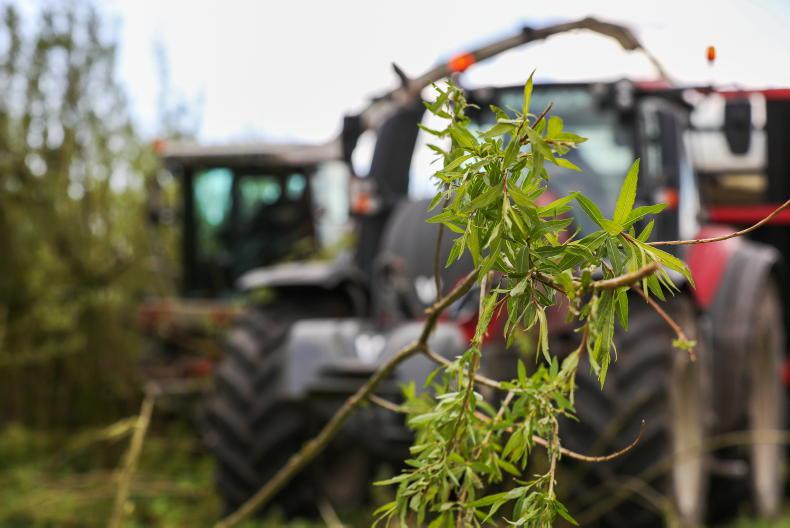
Willow is normally harvested every three years for biomass.
If the commercial viability of willow could be improved, it may become a viable option for farmers who wish to diversify. This is a key aim of the project.
Aim
Another aim is to develop a commercial business case for a willow biorefinery in Ireland, producing salicin and possibly other bioactives and pulp for packaging.
According to the project partners, a refinery similar in scale to a typical dairy cooperative could be feasible in Ireland. The project is due to finish in 2023.
Fast growing and well-suited to the Irish climate, willow is a crop which fits in well with Irish farms. However, the crop has had a somewhat troubled past.
The Government introduced a scheme to incentivise the planting of willow in 2007 but waited nearly a decade to develop a follow-up scheme to help incentivise its use.
As a result, many of the 3,000ac of willow crops planted with the help of the scheme have now disappeared due to a lack of market development.
All of those crops were grown as biomass to be burned in biomass boilers to create either heat or electricity.
But willow is a highly versatile crop with multiple different uses and many now believe that the crop was targeted at the wrong market.
Willow, specifically its bark, contains a host of high-value bioactives which could potentially be used in the pharmaceutical industry. This could drastically change the economics of the crop.
The BioWILL Interreg North West Europe project, which is led by University of Limerick, aims to develop the business case for a willow biorefinery to process the crop and create a range of high-value products.
The Irish Farmers Journal recently attended a project update meeting to see how the project was progressing.
The BioWILL project aims to develop “Zero Waste” biorefinery, which processes willow bark and extracts a range of high-value bioactives for medical applications.
The refinery would then use the bark-free pulp to make food-packaging materials with any waste and residues used for biogas and biofertiliser production.
Bioactives
The bark from willow has been used for centuries as a pain reliever.
This is due to the bark of certain varieties of willow containing an active ingredient called salicin which is chemically similar to aspirin.
The salicin inside willow bark is believed to work the same way as aspirin, by reducing inflammation and pain as it enters the bloodstream.
Salicin also has a range of other uses in the pharmaceutical industry such as in skincare.
However, willow is also a rich source of other bioactives such as tannins and flavonoids, which contribute to anti-inflammatory, analgesic, antipyretic and keratolytic activity.
Bioactives are high-value products. For example, salicin can trade at between €70 and €80/kg.

Bark being stripped off a willow plant.
The bark of willow can contain up to 2% salicin on a dry weight basis but this depends on the variety. The project looked at extracting and valorising a range of these high-value bioactives from multiple varieties of willow.
Willow varieties
Not every variety of willow contains the same volume of bioactives. The Agri-Food and Biosciences Institute in Northern Ireland identified willow varieties with high salicin content in the bark and assessed them. Some 30 varieties are being trialled across various sites as part of the project and are being evaluated for both salicin and biomass yield.

Willow crop growing near Gainestown, Co Westmeath.
Packaging
After the extraction process, the remaining bark-free willow pulp can be used to make biodegradable food packaging.
The project team sees the rules around single use plastic for packaging as a significant opportunity for willow pulp packaging. Furthermore, most biodegradable pulps are made from newspaper from timber waste which is becoming more expensive, so willow could offer a lower cost alternative.

Willow pulp packaging would reduce single-use plastic food packaging.
The next step in the project is to evaluate the potential of using waste willow pulp packaging to produce biomethane from anaerobic digestion plants. The theory is to recycle this waste source to produce energy and digestate which could be used to power a refinery and fertilise willow crops.
So far, the project has determined that the biomethane yield from willow pulp is relatively low, and would need to be co-digested with another feedstock to be economically viable.
Willow is well suited to Irish farms and is proven to help improve water quality and sequester carbon. In other words, willow is a crop for the times.
However, after a false start, the uptake of willow as a diversification option for farmers remains low due to lack of market options, unreliable financial returns and no planting grant aid in place.

Willow is normally harvested every three years for biomass.
If the commercial viability of willow could be improved, it may become a viable option for farmers who wish to diversify. This is a key aim of the project.
Aim
Another aim is to develop a commercial business case for a willow biorefinery in Ireland, producing salicin and possibly other bioactives and pulp for packaging.
According to the project partners, a refinery similar in scale to a typical dairy cooperative could be feasible in Ireland. The project is due to finish in 2023.








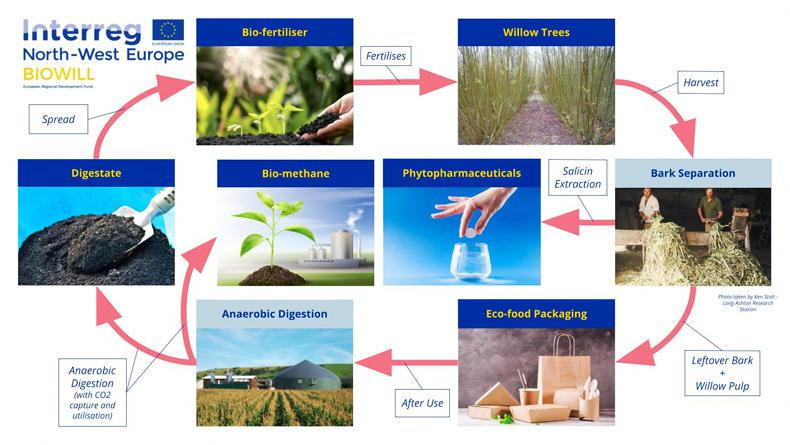
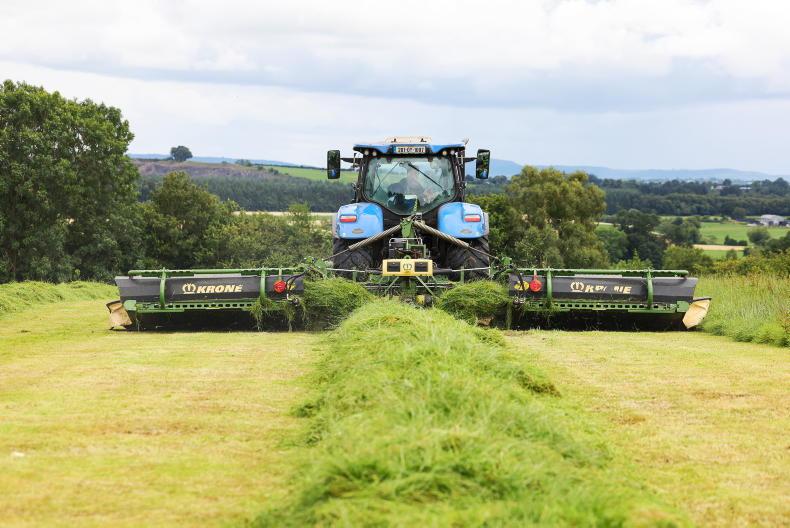

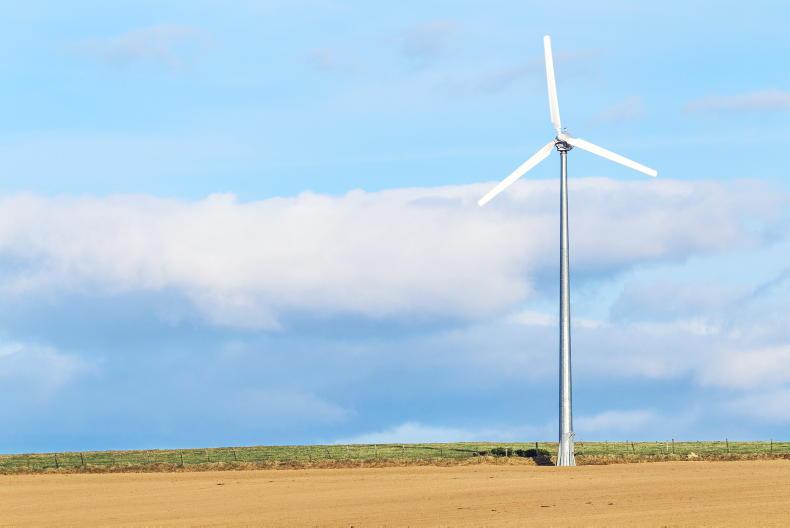
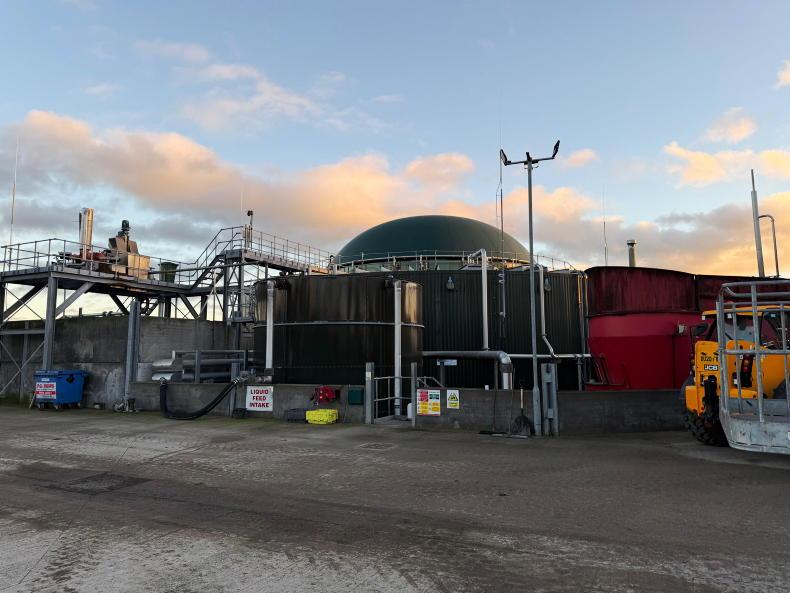
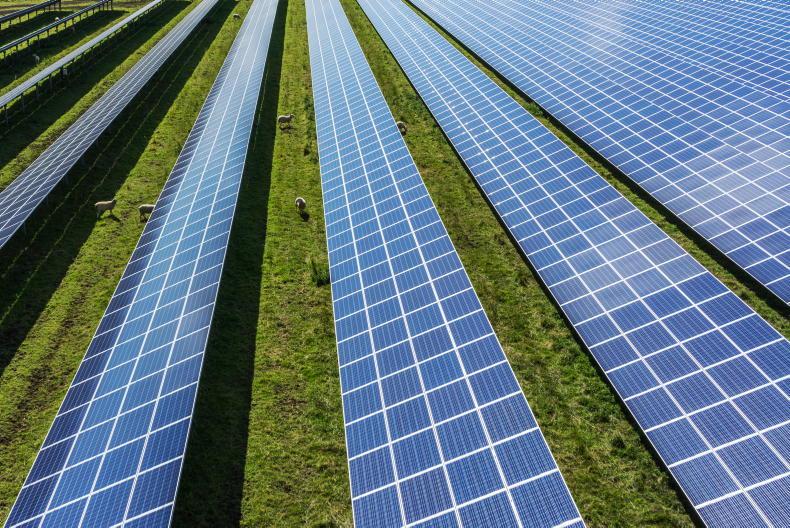
SHARING OPTIONS